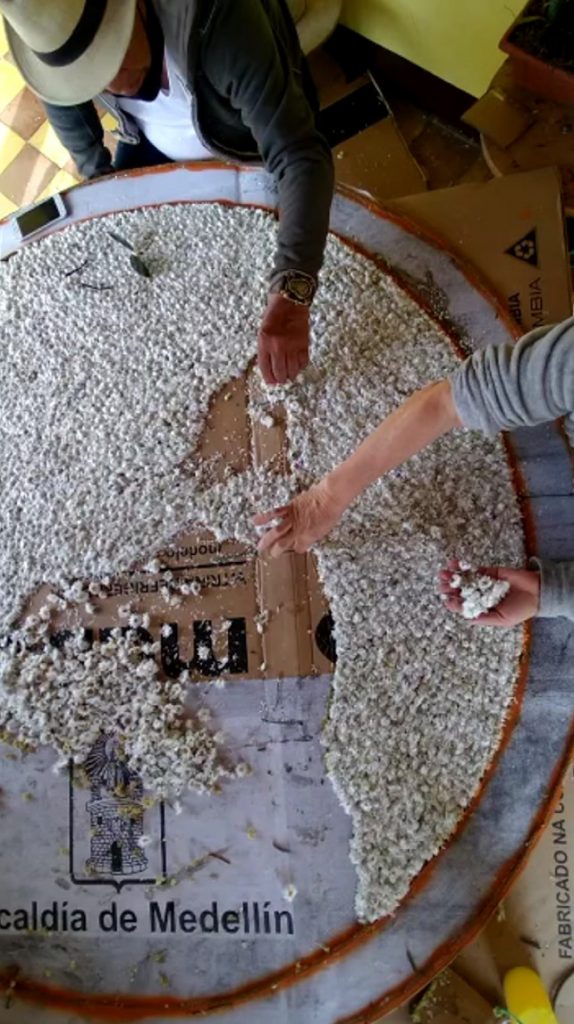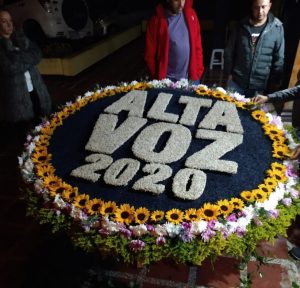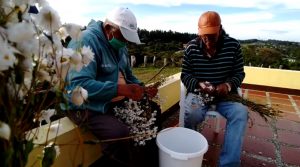January 25, 2022
Eirini M. Poulaki
The idea for this seminar was inspired from McGill University. Catherine Ross (PhD 2022) saw a Twitter post about it, and we thought it would be a great opportunity to bring this into the Jackson School! The goal of this seminar is to give voices to all the international students, post-docs, and faculty. We want to highlight the different cultures and backgrounds everyone is coming from and most importantly create awareness and foster an inclusive environment in JSG. I believe that it is important for international students to have peers and colleagues that know and appreciate their cultures to feel more welcomed in the community.
In our inaugural semester (Fall ’21), we had three great sessions, and each one of them had a different topic. The first seminar was the transition of international students to the U.S. and the hardships students had to encounter. The second one was about cultures and traditions around the world and the third one was about geology around the world. In every seminar I feel stronger connections to all our presenters. It was inspiring to learn how everyone’s experiences are so different, but we share common ground in the love for our traditions, cultures, and the bonds to our countries and/or communities. In the seminar we don’t only learn new things from our peers that come from all parts of the world, but we also build a stronger community by understanding and appreciating each other.
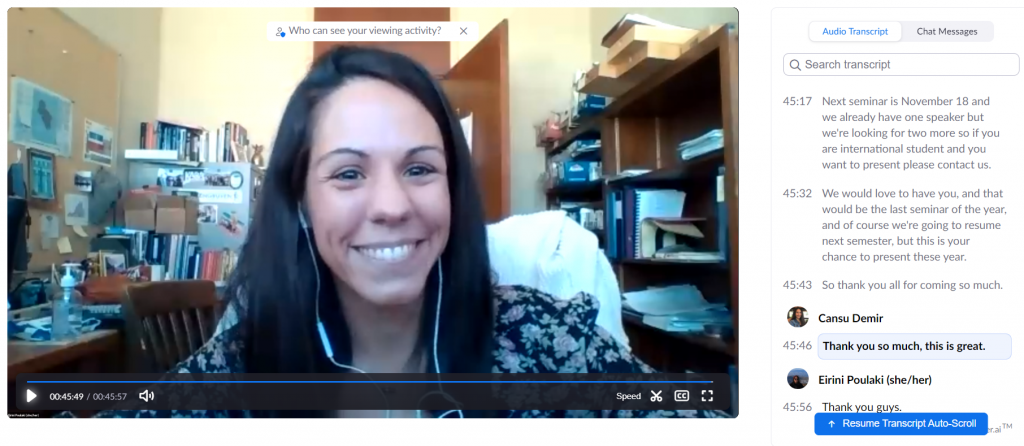
Emily Bamber
The new geoscience international student seminar series is a fantastic way to share our different cultures and experiences as international students with each other and fellow home students. I thoroughly enjoyed hearing about Simone, Siyu and Daniel’s experiences of transitioning to the US in the first installment, and was extremely excited to share aspects of my British and Welsh culture during the second event in October (2021) along with Cansu and Ana María. I sometimes feel I am sacrificing aspects of my own culture to “fit in” a bit more in the US, whether it’s using the word “courgette” (or ‘haggis’) and people having no idea what I’m talking about, or constantly being referred to as “English” (I’M WELSH OR BRITISH, THANK YOU!!). So, it actually means a lot that I can honour parts of my culture, even the weirdest parts, and that members of the JSG community want to listen and learn about it. With the theme of celebrations for the seminar, I especially had a great time looking through old photos and videos with the help of my family and community, and for a short while it made the Atlantic Ocean feel a lot smaller.

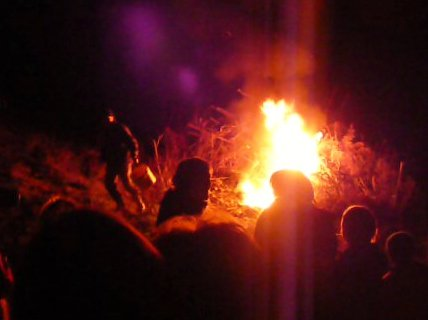
Cansu Demir
Participating in the Geoscience International Student Seminar was a great experience! It allowed me to remember the meaning of things and my culture which you sometimes take for granted while you are living it. Being away from home is an all-time struggle that one who never left their comfort zone could never understand. However, it is also an amazing, mind-expanding, eye-opening experience where you feel like the world gets smaller and smaller, biases go away, and understanding appears in your life. When you taste the sweetness of learning new things, you never want to stop. These four years I spent in a diverse community in the US — together with the science I am doing — made me start a new chapter in my life. A very good, and satisfying one. This seminar series was a great opportunity to reflect what we as international students feel, live through, and explain who we are without other’s assumptions about ourselves. So a big thank you to the organizer Eirini Poulaki (PhD 2022)!!!
In my presentation, I talked about some of Turkey’s holidays and celebrations that bring people together. Here I will mention one of them. It is called 23 April National Sovereignty and Children’s Day (shortly, Children’s Day). The reason I chose to talk about this is because this holiday is very special not only to the people of Turkey, but also for all the kids around the world from different cultural backgrounds, languages, and beliefs. Originally, 23 April 1920 was the day when the Grand National Assembly of Turkey (Parliament) was founded by Mustafa Kemal Atatürk, the founder and the first president of the Republic of Turkey. In 1929, this historically important day was gifted to children as a holiday by Atatürk to emphasize that “they are the assurance of our future and joy of living“. In 1979, the holiday started being celebrated internationally. Since then, every year during this time, children from about 50 countries come to Turkey to stay with Turkish families, interact with the Turkish children and learn about each other’s countries and cultures. Schools participate in ceremonies, and students put on performances of all kinds in large stadiums watched by the entire nation. As a tradition, children replace state officials and high ranking civil servants in their offices, including the president, and give speeches. This day always inspires me, even as an adult, because while we are bigger in size, deep down we are still kids in spirit — kids who are imagining, creating new ideas and technologies, and defining the future.
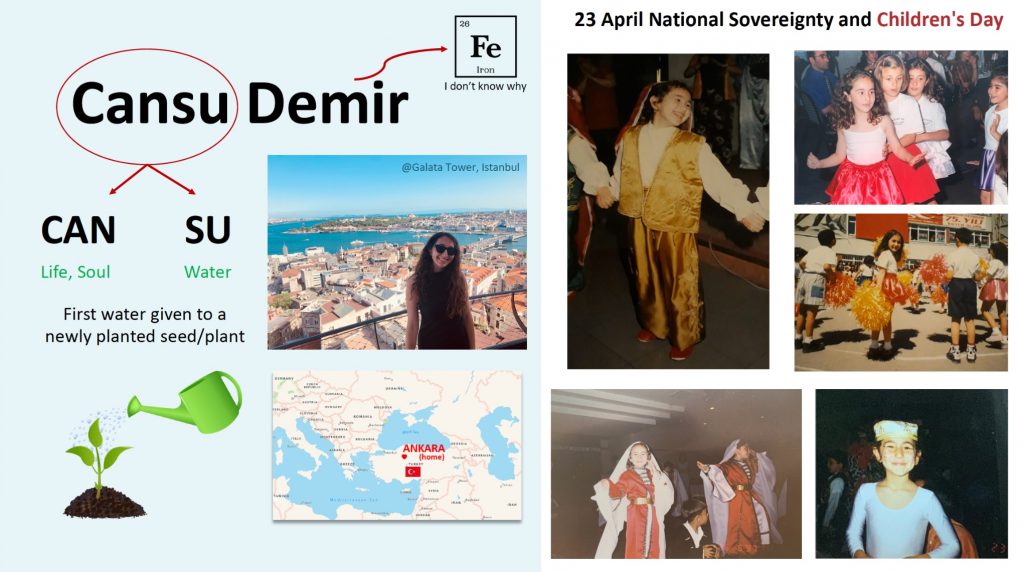
Ana María Restrepo Acevedo
During my participation in the international students’ seminar, I shared a celebration that happens every year in August in my hometown of Medellín (Colombia) called ‘La feria de las Flores’ or The Flowers’ Festival. In my city, we celebrate the biodiversity of our country and the tradition of our ancestors by elaborating massive and colorful flower ornaments that are exhibited in schools, shopping malls, museums, parks, and public spaces throughout the city. The real highlight is the ‘Desfile de Silleteros’ (or “Flower Grower’s Parade”). In this event, hundreds of local flower growers parade through the streets of the city with enormous flower displays strapped to their backs. They can carry up to 550 pounds of flowers while wearing traditional dresses and compete for the most beautiful and elaborate arrangement. The festival started back in 1957 and has been held annually since then. The home of the Medellín flower culture is, in fact, the small town of Santa Elena, located just to the east of the city. This small town is the heartland of the region’s flower growers, and most of the ‘silleteros’ in the parade originate from here. In the 1800s, people would walk up to 50 miles from their homes to the downtown area to try to sell their fresh farm products including, of course, a lot of variations of flowers. Without any type of mechanical transportation available, they would carry their products on their backs in a homemade wooden structure that looked like a chair – or ‘silla’ in Spanish, from then they were called ‘silleteros’, the ones who carry chairs.

Our festival can be easily categorized as a little too excessive and probably wasteful – based on the size of the ornaments or the number of flowers that are cut and used to elaborate one – but this celebration has been also used to promote Colombian flowers in the entire world. It is not a coincidence that about 80% of the flowers that are sold in the US during Valentine’s Day come from my region, with about $1,400 million US of sales per year. As Emily mentioned, the theme of celebrations brought me back home to my family and my friends, to cold nights in August drinking hot chocolate and eating warm empanadas while staying up all night cutting flowers and building silletas (dancing salsa and merengue through all the process, of course). If anyone in the JSG community is interested in flowers, food, dancing, and making new friends, I will be very happy to take you to my region to explore with me the beauty of the biggest flower festival in the world.
